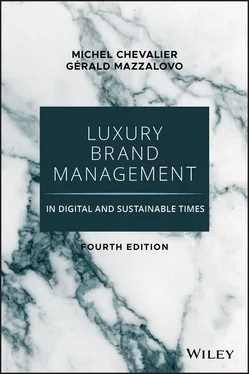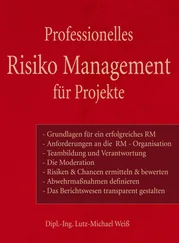Michel Chevalier - Luxury Brand Management in Digital and Sustainable Times
Здесь есть возможность читать онлайн «Michel Chevalier - Luxury Brand Management in Digital and Sustainable Times» — ознакомительный отрывок электронной книги совершенно бесплатно, а после прочтения отрывка купить полную версию. В некоторых случаях можно слушать аудио, скачать через торрент в формате fb2 и присутствует краткое содержание. Жанр: unrecognised, на английском языке. Описание произведения, (предисловие) а так же отзывы посетителей доступны на портале библиотеки ЛибКат.
- Название:Luxury Brand Management in Digital and Sustainable Times
- Автор:
- Жанр:
- Год:неизвестен
- ISBN:нет данных
- Рейтинг книги:4 / 5. Голосов: 1
-
Избранное:Добавить в избранное
- Отзывы:
-
Ваша оценка:
Luxury Brand Management in Digital and Sustainable Times: краткое содержание, описание и аннотация
Предлагаем к чтению аннотацию, описание, краткое содержание или предисловие (зависит от того, что написал сам автор книги «Luxury Brand Management in Digital and Sustainable Times»). Если вы не нашли необходимую информацию о книге — напишите в комментариях, мы постараемся отыскать её.
delivers a timely re-examination of what constitutes the contemporary luxury brand landscape and the current trends that shape the sector. Distinguished experts and authors Michel Chevalier and Gerald Mazzalovo provide readers with a comprehensive treatment of the macro- and micro-economic aspects of management, communication, distribution, logistics, and creation in the luxury industry.
Readers will learn about the growing importance of authenticity and sustainability in the management of fashion, perfume, cosmetics, spirits, hotels and hospitality, jewelry, and other luxury brands, as well as the strategic issues facing the companies featured in the book. The new edition offers:
A new chapter on the “Luxury of Tomorrow,” with a particular focus on authenticity and durable development A completely revised chapter on “Communication in Digital Times,” which takes into account the digital dimension of brand identity and its implications on customer engagement activities and where the concept of Customer Journey is introduced as a key marketing tool A rewritten chapter on “Luxury Clients” that considers the geographical changes in luxury consumption Considerations on the emerging notion of “New Luxury” Major updates to the data and industry figures contained within the book and a new section dedicated to the hospitality industry New semiotic analytical tools developed from the authors’ contemporary brand management experiences Perfect for MA and MBA students, Luxury Brand Management also belongs on the bookshelves of marketing, branding, and advertising professionals who hope to increase their understanding of the major trends and drivers of success in this sector.












